|
|
Greetings to all readers,
Well, it’s summer here in Japan. Actually, we are still firmly  ensconced in the rainy season, but it will be over soon, and while the rain will go away the infernal humidity - that oppressive, suffocating humidity - will still be here. You can cut it with a knife. ensconced in the rainy season, but it will be over soon, and while the rain will go away the infernal humidity - that oppressive, suffocating humidity - will still be here. You can cut it with a knife.
But it is that very humidity, that wonderful, life-giving humidity, that makes koji mold so common here, and over the centuries, made sake what it is. So let us give thanks for humidity and the mold it supports.
But let’s sleep with the dehumidifier on as well.
Enjoy whatever season is upon you, and enjoy the newsletter as well,
John
|

Moss, Mold and Yeast
In March of this year, I visited a temple in Kyoto behind which lay a large, sprawling garden within which, we were told, there are 47 kinds of moss being deliberately cultivated. Upon confirming this, I was told that there are approximately 120 varieties of moss in the  Arashiyama (a region of Kyoto) foothills area. However, we laymen can only discern about a half-dozen. “In other words,” explained my moss-sensei, “the differences are subtle.” You don’t say… Arashiyama (a region of Kyoto) foothills area. However, we laymen can only discern about a half-dozen. “In other words,” explained my moss-sensei, “the differences are subtle.” You don’t say…
For many of us not familiar with the attention to detail that typifies  Japanese craftsmanship, be it sprawling gardens or sake, the reaction might be, “Moss? You mean that green shit that grows on rocks? Moss is moss, iddn’t it?” Apparently, no; it iddn’t. Japanese craftsmanship, be it sprawling gardens or sake, the reaction might be, “Moss? You mean that green shit that grows on rocks? Moss is moss, iddn’t it?” Apparently, no; it iddn’t.
It is this very attention to detail - in this case to tiny living things - that makes sake what it is. And sake brewing asks no quarter of gardening, nor anything else, when it comes to precision in their cultivation. Most notably, consider the use of yeast and koji mold.
There are countless strains of yeast, and countless strains of koji  mold. Sure, we hear about Number 9, and 18-01, and 7 and 301. Or we hear about Hiroshima or Akita or Alps or Meiri yeasts. But in truth, these big names are but the tip of the yeast iceberg. There are many, many more beyond that. mold. Sure, we hear about Number 9, and 18-01, and 7 and 301. Or we hear about Hiroshima or Akita or Alps or Meiri yeasts. But in truth, these big names are but the tip of the yeast iceberg. There are many, many more beyond that.
And they blend them in myriad ways and deal with their mutations over time. And, in the end, like the moss in the Arashiyama foothills, the differences are subtle. But to the brewers, just what yeast to use for what product, with which rice, in which climate, blended in which proportions and using which blending method can all lead to almost infinite permutations. And in the hands of an experienced toji, those subtle differences yield sakes that are worlds apart.
 As I have mentioned in other articles on yeast, it all gets difficult to follow for us laymen. As one toji told me, “most of the folks that say they are using yeast number nine are in actuality using a descendent or variation of number nine. Not much ‘pure nine’ is out there anymore.” As I have mentioned in other articles on yeast, it all gets difficult to follow for us laymen. As one toji told me, “most of the folks that say they are using yeast number nine are in actuality using a descendent or variation of number nine. Not much ‘pure nine’ is out there anymore.”
So while we hear a lot about a few big yeast names, it is rarely ever that simple.
And, of course, there are many strains of koji mold out there. Koji mold is used in making many things, including miso, shoyu (soy sauce), shochu and awamori. Sake brewing uses a variety that looks  slightly amber when propagated (and is therefore called “yellow koji”), but even within that genus here are innumerable varieties; somewhere, I am told, between a gazillion and a gazillion-and-a-half. slightly amber when propagated (and is therefore called “yellow koji”), but even within that genus here are innumerable varieties; somewhere, I am told, between a gazillion and a gazillion-and-a-half.
However, in the case of koji mold, even more important than the strain of mold is the method and skill with which the mold is propagated onto the rice. How much mold is used, is it propagated sparsely or heavily, does it hand around the outside surface of the rice or grow in toward the center - these and other factors make an incredible difference.
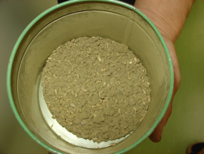 This concept of koji-making, “method over mold,” is significant enough to warrant an article of its own, one that I will get to in the near future in this newsletter. But in the meantime, consider that koji is made four times for any one batch of sake. And the characteristics of the completed koji will vary each one of those four times. It will also be different for each grade, each brewery, each milling rate, often each rice, and each season for sure. This concept of koji-making, “method over mold,” is significant enough to warrant an article of its own, one that I will get to in the near future in this newsletter. But in the meantime, consider that koji is made four times for any one batch of sake. And the characteristics of the completed koji will vary each one of those four times. It will also be different for each grade, each brewery, each milling rate, often each rice, and each season for sure.
Moss schmoss. The micro-organisms used in sake brewing and their careful, meticulous cultivation are second to none in validating St. Exupery’s concept in The Little Prince: “What is essential is invisible to the eye.”
|
 Sake Basics Sake Basics
The Yeast Starter: Moto or Shubo - Why and How
Sake is brewed by first creating a small tank - a miniature batch really - in which the goal is to create a very high and dense population of yeast cells. Sure, alcohol will be created too, but the priority at this stage is to get the yeast to reproduce to the tune of as many as 200 million yeast cells per cc of mash. This yeast starter is called the “moto,” or the “shubo.”
Why? Because sake is fermented in a tank that is open to the world, which means all kinds of bacteria and wild yeast can - and will - drop in. Once the vigorous fermentation is moving along, the carbon dioxide gas blowing off will protect it, but until it gets that far, the sake yeast needs to win the battle through sheer numbers.
|
 Did You Know? Did You Know?
Different Kinds of Moto
Pursuant to the topic above, there are several kinds of moto. The 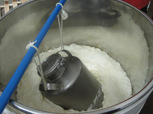 most common by very, very far is “sokujo” moto, a clean, fast and safe method for brewers to use, hence its status as the default method. Well over 99 percent of all sake is made using this method. Yamahai-moto and kimoto are two more methods that lead to gamier styles. most common by very, very far is “sokujo” moto, a clean, fast and safe method for brewers to use, hence its status as the default method. Well over 99 percent of all sake is made using this method. Yamahai-moto and kimoto are two more methods that lead to gamier styles.
Then there is something called bodai-moto that was the precursor of other methods, developed in temples and shrines over a millennium ago.
More recently, a method called “Koh-ohn Toh-ka,” or “high temperature saccharification” which holds the materials at higher-than-usual temperatures to speed up starch to sugar conversion. And, of course, just to hose those of us trying to learn about sake, there are other methods that are combinations or variations on the above, like “Chu-ohn Toh-ka” (mid-temperature saccharification), and variations on the bodai-moto method as well.
But rest easy and know that almost everything you taste will be the first, default moto, with yamahai and kimoto being distant seconds in how often you encounter ‘em.
|
 Events Events
Ginjo Bar open daily in Shimbashi
The Nihon Ginjo-shu Kyokai, that veritable group of 56 ginjo breweries around the country, will be using the space of Shimbashi Kuri from June to the end of August. From 2:00 pm until 9:00 pm you can taste the sake of these 56 sterling breweries from all over Japan. A small glass (45ml) will set you back just 200 yen to 400 yen, presenting the chance to try a wide range of sake for a reasonable outlay. A list of which brewers will be there pouring their brews and when can be found here:
Nihonshu Festival
 On Sunday, July 11, the proprietors of the restaurant Shuen Kawashima will hold the tenth annual Nihonshu Festival, a tasting party replete with great food and a lively atmosphere. If you are anywhere near Tokyo, I highly recommend this bash. On Sunday, July 11, the proprietors of the restaurant Shuen Kawashima will hold the tenth annual Nihonshu Festival, a tasting party replete with great food and a lively atmosphere. If you are anywhere near Tokyo, I highly recommend this bash.
What’s so special about it? Why, the sake that is there, that’s what. Sure, there are plenty of decently well known brands and established high quality producers. But on top of that, perhaps two-thirds of the sake there is from little known, smaller producers that might not get into mainstream distribution. Mostly hit, a little miss, a ton of fun. And the food is made by three or so restaurants that focus on sake, so you know it’s gotta rock.
The event has two sessions, 12:00 to 3:30 and 4:30 to 8:00. Pricing is complicated: 7000 yen for one session, 10,000 yen for both, 12,000 yen for couples attending one session. Day of show all prices go up 2000 yen per person.
Trust me: this one is fun, educational, and worthwhile. Be there if you are even close. More information can be found here.
|
Two For One Sale - Buy One Get One Free 
ANNOUNCING… the first ever Two for One Sale from the Sake-World Education Central.
Buy any one of the Sake Education Products from Sake World Education Central and get another of equal or lesser value for absolutely FREE.
Want to learn basic sake facts quickly? Grab The Sake Notebook.
The Sake Production Slideshow allows you to sit back, relax and watch a beautiful, condensed powerpoint presentation of how sake is produced.
Combine the above products, at a discounted rate, with the Notebook/Slideshow Package.
Japanese for Sake Lovers not only teaches sake pronunciation, it includes a native speaker pronouncing the words with a time lapse for your practice. You not only learn how to speak “sake”, you learn proper Japanese pronunciation without the cost of a Japanese language course!
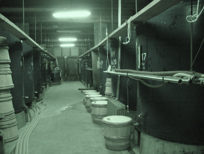 Do you w ant to know the “behind the scenes” secrets of the master brewers? Read the untold stories of sake brewers in Sake’s Hidden Stories. Do you w ant to know the “behind the scenes” secrets of the master brewers? Read the untold stories of sake brewers in Sake’s Hidden Stories.
Going to Japan or a Japanese restaurant? Perhaps you’re in the mood for sushi and sake at home. Do you know what to look for and how to ask for it? You will when you tote around more than 200 terms in your pdf or iPhone with The Sake Dictionary.
(Note: The iPhone app version of The Sake Dictionary is not available as the “freebie,” as its distribution is controlled by Apple. The pdf vesion, however, is fair game. Your understanding is appreciated.)
And now, get any one of the above for FREE when you purchase another.
This offer is only available for 15 days – until July 15, so ACT NOW!
HOW TO CLAIM YOUR FREE SECOND PRODUCT: After purchasing one product from the Sake World Sake Education Central page, send an email to johngauntner@sake-world.com, pasting in that mail proof of purchase from the email confirmation from Payloadz.com, (or from Apple if you purchased the iPhone app) and indicating your choice for a second product of equal or lesser cost. Upon verifying your purchase, we will send you a link for a download of the requested procuct. It's that simple!"
This is the first time I have ever made an offer like this and, as it is admittedly a test, it may not be offered again. Do not let this opportunity pass you by. As a sake beginner or connoisseur, you will find something for your “tastes” in any of these sake products. Enjoy! all begins with a guide to the theory of pronouncing Japanese, which
Japanese For Sake Lovers
A Guide to Proper Pronunciation
Here it is: something that ensures you will enjoy your sake experience more and more - a short, concise instructional guide on how to properly and naturally pronounce the Japanese language, sake brand names, and all the terminology that is a part of the sake world. With the help of this little course, you will sound like a native when talking about sake.
No more butchering sake names in Japanese! Learn how to properly pronounce the sake you love!
Japanese for Sake Lovers consists of a short text and three audio files. It all begins with a guide to the theory of pronouncing Japanese, which you will soon realize is surprisingly simple. Following that, you will have the opportunity to practice pronunciation of all the important terminology surrounding sake, and dozens of brand names that cement in your mind the principles, fundamentals, and idiosyncrasies of pronouncing Japanese.
This is not a language text. You will not learn grammar or much 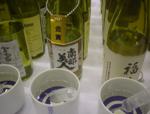 vocabulary outside of sake-specific terms; although, it does include a handful of phrases to help you navigate your way to sake bliss in Japanese when at a sake pub. It is augmented by three audio files that allow you to practice, repeating the words and phrases after a native speaker. vocabulary outside of sake-specific terms; although, it does include a handful of phrases to help you navigate your way to sake bliss in Japanese when at a sake pub. It is augmented by three audio files that allow you to practice, repeating the words and phrases after a native speaker.
Go here now to order your copy for $14.99, and feel one step closer to the beverage you love – guaranteed.
*Satisfaction
Guaranteed*
Should Japanese For
Sake Lovers not significantly improve your ability to pronounce all
sake-related terms and words, your money will be cheerfully refunded, no
questions asked.
|
Stay Subscribed!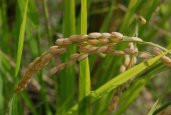
Are you not getting this newsletter? I realize that is like asking that "those not present please raise your hand," but for future reference, should you spontaneously stop receiving this newsletter, please go here and sign up again. Should that not work, please go to www.sake-world.com.
Email newsletter services are very careful not to be considered spam enablers, but the problem is that often very valid email addresses come back bounced as invalid. It is an unavoidable problem. So if you or someone you know is not getting this, or stop(s) receiving it inexplicably, please do take a moment to double check that you are still subscribed.
Sincere apologies for the hassle, mixed with gratitude for reading this newsletter.
|
I hope you have found the above information helpful and entertaining. For more information about all things sake, please check out www.sake-world.com. Until next month, warm regards, and enjoy your sake. 
Questions and comments should be directed to John Gauntner, at this email address.
All material Copyright, John Gauntner & Sake World Inc.
Regards,
John Gauntner
Sake World, Inc.
|
|
